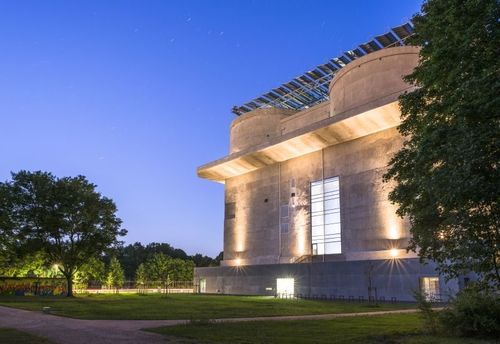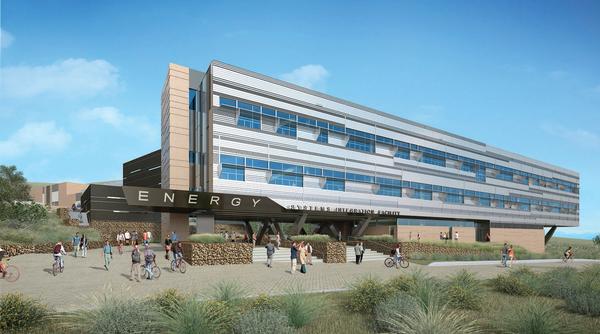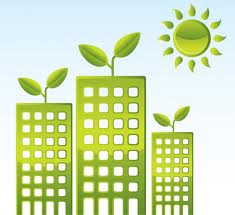Watt Plaza is raising the bar for sustainable building operations in Century City. Watt Plaza announced today that the twin 23-story office tower earned LEED Platinum for Existing Buildings Operating and Maintenance from the U.S. Green Building Council. Watt Plaza has the distinction of being one of four high-rise office buildings in the City of Los Angeles to achieve this premier distinction, one of 46 in the state of California and one of 110 nationwide.
The U.S. Green Building Council LEED Certification system is the nation’s benchmark for the design, construction and operation of the world’s greenest, most energy efficient and high-performing buildings. LEED Certification of Watt Plaza was based on seven key categories of human and environmental health: Sustainable Site Development, Water Efficiency, Energy and Atmosphere, Materials and Resources, Indoor Environmental Quality, Innovation in Operations and Regional Priority.
Realizing a reduction of over 35% in conventional transportation trips through an Alternative Commuting Transportation program, Watt Plaza is notably the first commercial office building in Century City to install electric vehicle charging stations in the parking facility to encourage the use of alternative fuels. The installation of a white roof to reduce the “heat island effect” was also part of its Sustainable Site Development measures.
The team at Watt Plaza has been very aggressive in their Water Efficiency Measures: Watt Plaza was the first Class A Office Building in Los Angeles to replace all traditional urinals with water-free fixtures. Low-flow faucet aerators and toilets were also installed throughout the building, resulting in a savings of millions of gallons of water each year and reducing the burden on potable water supply and wastewater systems.
Watt Plaza’s landscape palette focuses on a mixture of using drought-tolerant plant material, recycled ground covers and a web-based irrigation system. The recycled ground covers consist of color glass and rubber in various planting beds. These types of ground covers have a low water absorption rate, prevent weed growth, maintain soil moisture, safeguard against insect infestations, have extremely slow decomposition rates and are non-flammable. The web-based irrigation controller automatically adjusts the amount of water dispensed based on real time weather data, preventing over-watering and keeping the soil moisture content adequate for specific types of plants.
Watt Plaza has consistently achieved high Energy Star ratings (the benchmark of energy performance relative to similar buildings in similar climates) each year since 2004, thereby reducing the environmental impacts associated with excessive energy use.
In addition to e-waste, battery, bulb and ballast recycling programs, its implementation of a waste program that diverts over 60% of all building waste to a materials recovery facility has reduced 1,258 tons of GHG (Greenhouse Gas Emissions) to date, equal to removing 838 passenger cars from the roadways for a year.
As part of the Indoor Environmental Quality category, Occupancy Sensors were installed throughout offices, common areas corridors, stairwells and restrooms, realizing a drop in electrical consumption by 690,000 kWh and improving the environment with an annual reduction of 936,655 pounds of carbon dioxide, 6,849 pounds of sulfur and 3,624 pounds of nitrogen dioxide. Further, Watt Plaza takes great pride in their high performance cleaning program, consisting of green-certified products and equipment to reduce the environmental impacts of cleaning products, disposable janitorial paper products and trash bags.
Watt Plaza also demonstrated its commitment to renewable energy development by offsetting 100% of its annual energy consumption through the acquisition of renewable energy. This purchase ensures that the amount of energy consumed at Watt Plaza is replaced on the electric grid by renewable, responsible energy sources. Watt Plaza’s commitment to supporting renewable energy development and reduce carbon emissions has an impact similar to taking 1,817 passenger vehicles off of the road for a year, or planting 223,635 tree seedlings and growing them for ten years.
Watt Plaza thinks outside the box when it comes to being green: Building Management created an environmentally friendly dog run for those tenants and visitors with licensed therapy dogs. Decomposed, compacted granite replaced several inches of soil in an area at the back of the building and biodegradable doggie bags and a trash receptacle was installed. When properly disposed, waste is diverted from storm water runoff and landscaped areas, preventing significant water pollution and maintaining aesthetically pleasing landscaped areas.
“It’s an honor for Watt Plaza to receive the distinction as the first commercial office building in Century City to receive LEED Platinum certification,” said Nadine Watt, President of Watt Companies. “Watt Plaza serves as a leading example of how commercial developments in large cities can be environmentally sustainable while also providing a top quality experience to tenants.”
To achieve its LEED Platinum certification, Watt Plaza received assistance from Healthy Buildings, an environmental consulting company that works alongside developers, building owners and managers to implement measures that enhance a building’s sustainability.
 A massive German air raid bunker, which had been derelict for several decades, now hosts a regenerative power plant supplying the surrounding area with green energy. The project is part of the “Renewable Wilhelmsburg” climate protection scheme, which aims to provide the 50,000 Wilhelmsburg residents with CO2-neutral electricity by 2025 and with climate-neutral heating by 2050.
A massive German air raid bunker, which had been derelict for several decades, now hosts a regenerative power plant supplying the surrounding area with green energy. The project is part of the “Renewable Wilhelmsburg” climate protection scheme, which aims to provide the 50,000 Wilhelmsburg residents with CO2-neutral electricity by 2025 and with climate-neutral heating by 2050.



